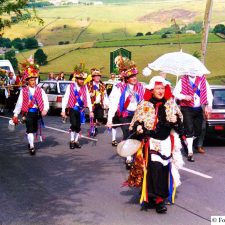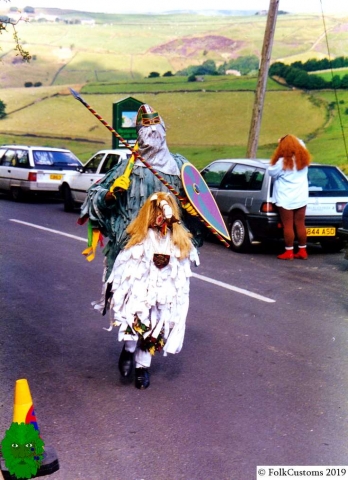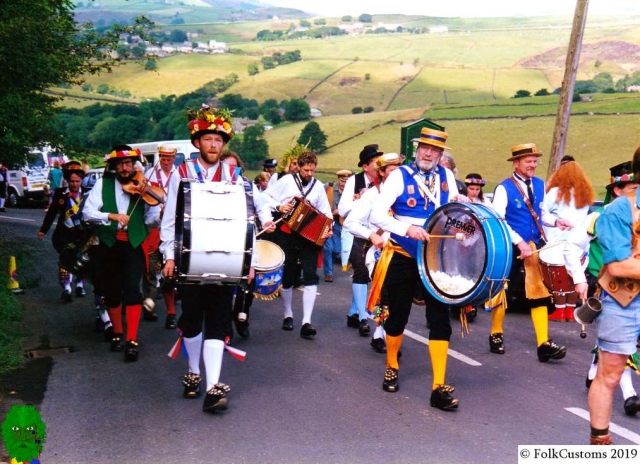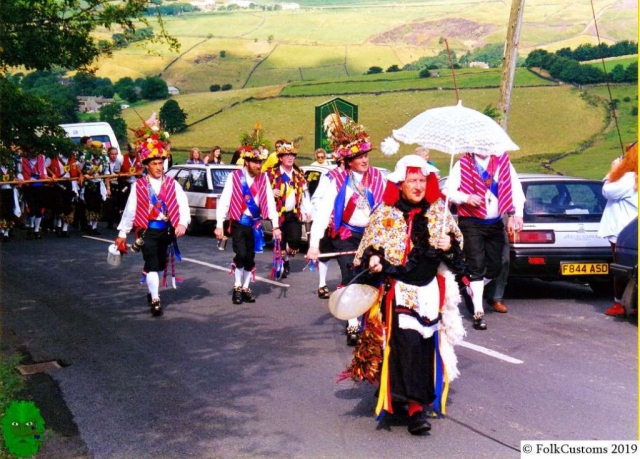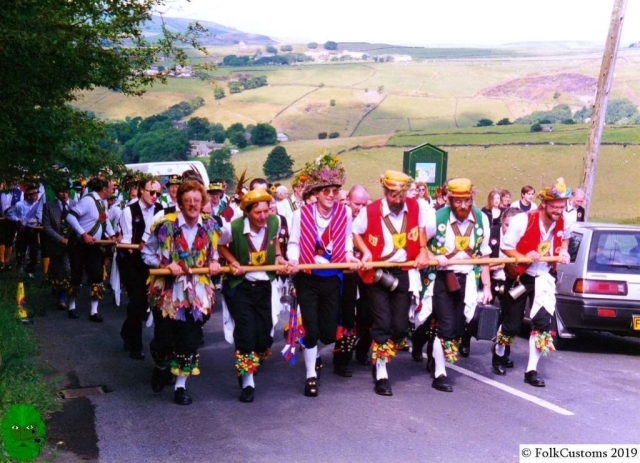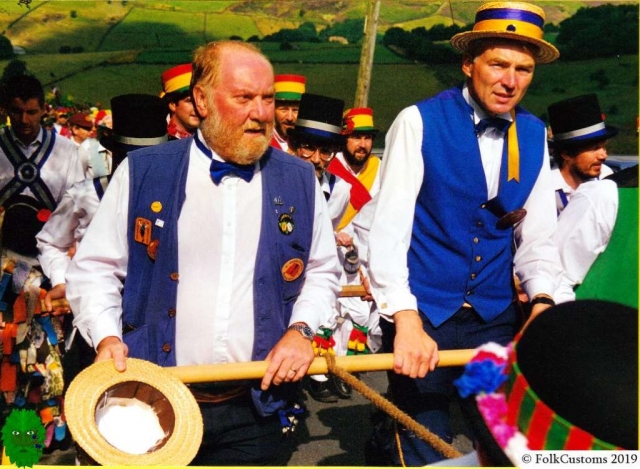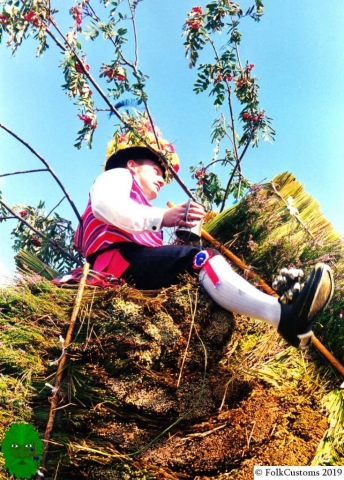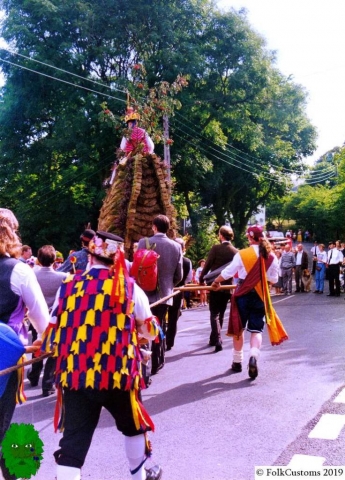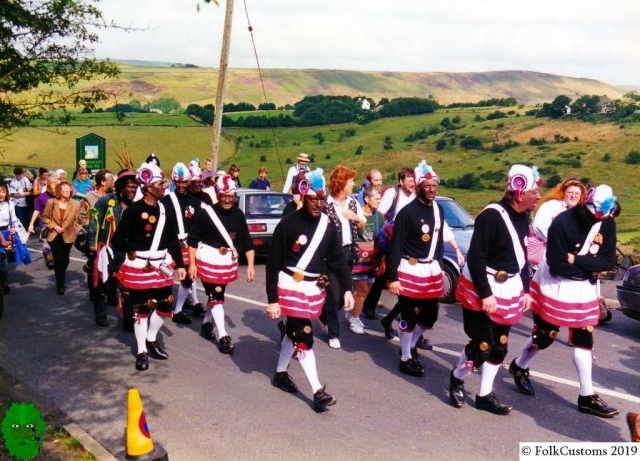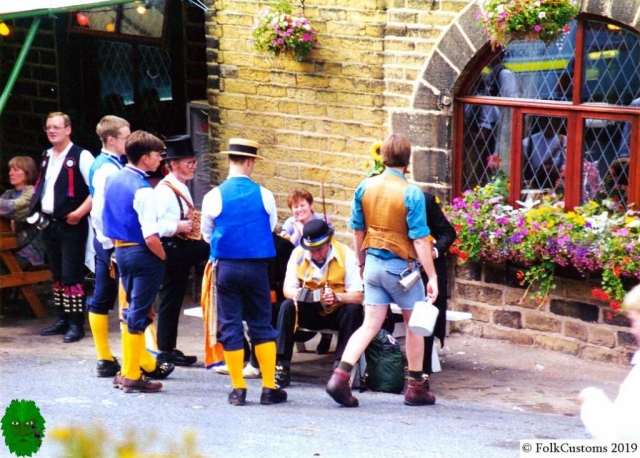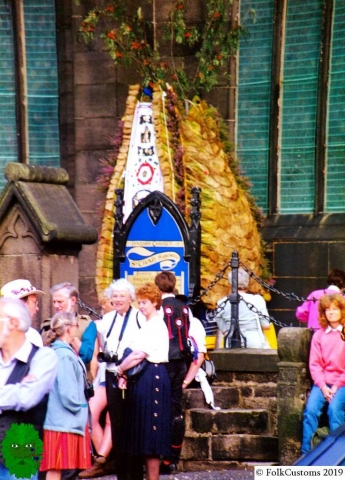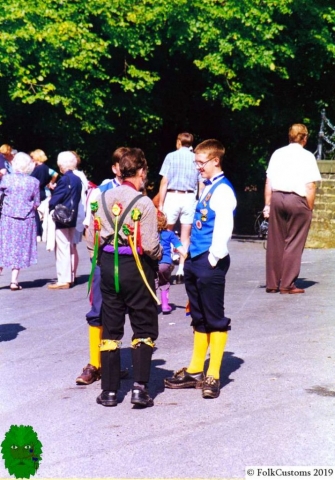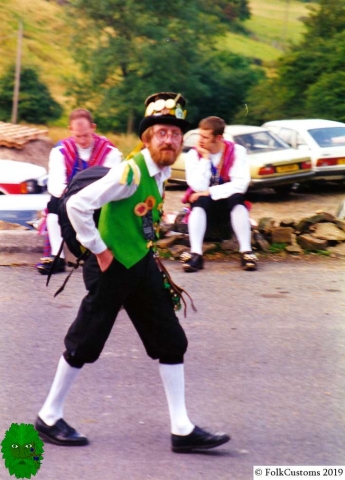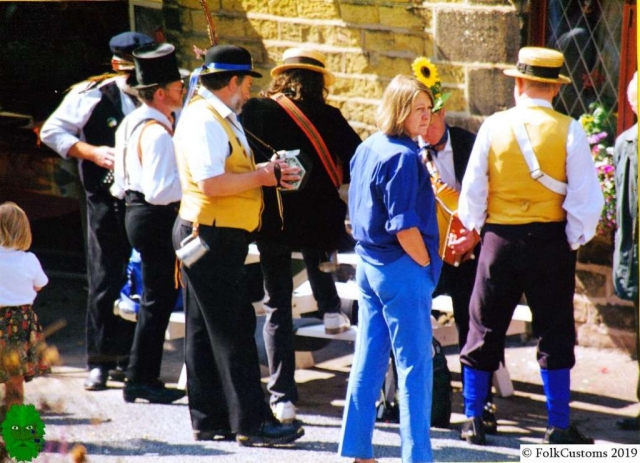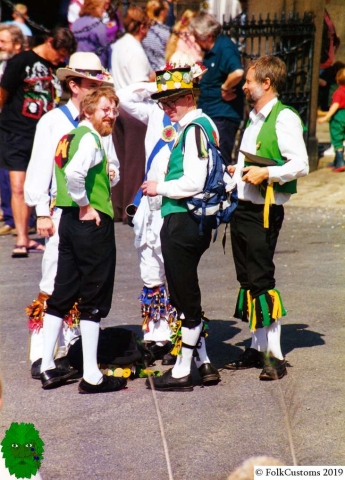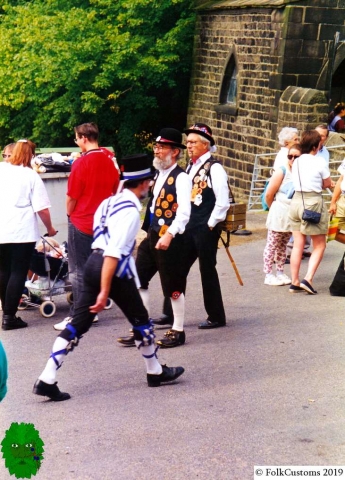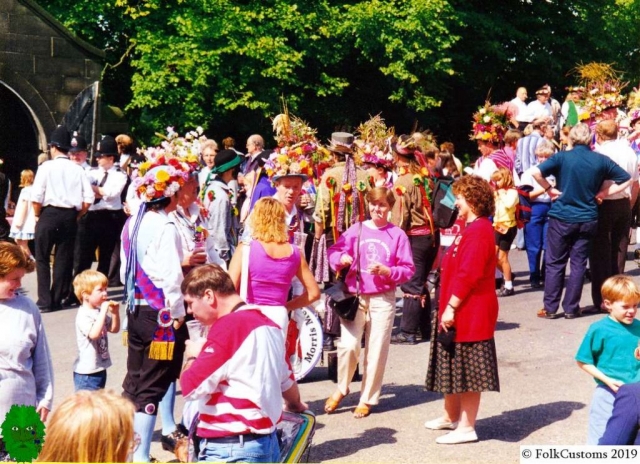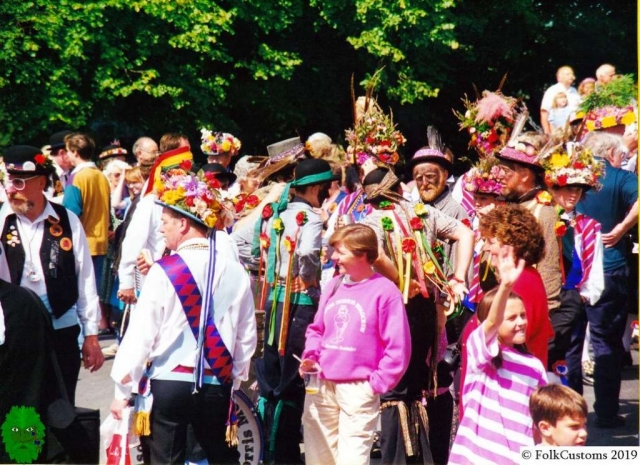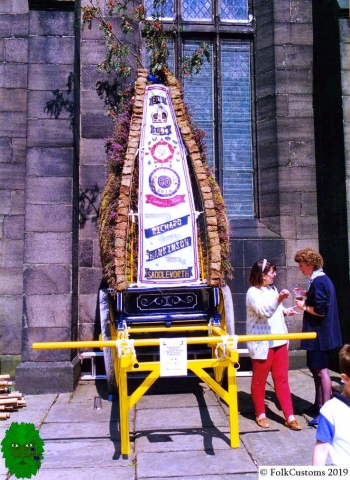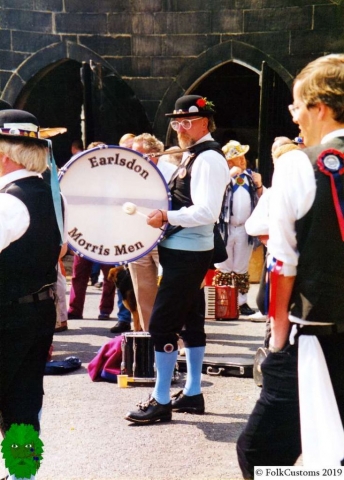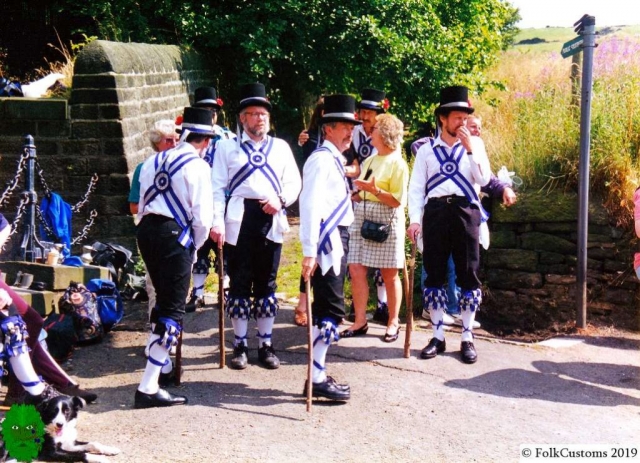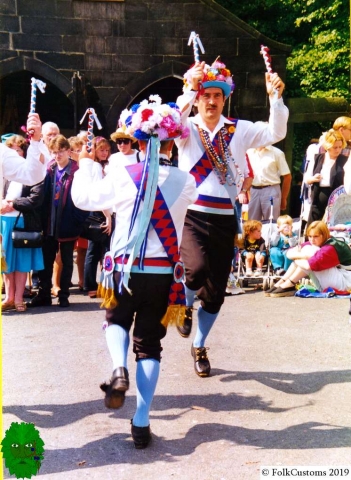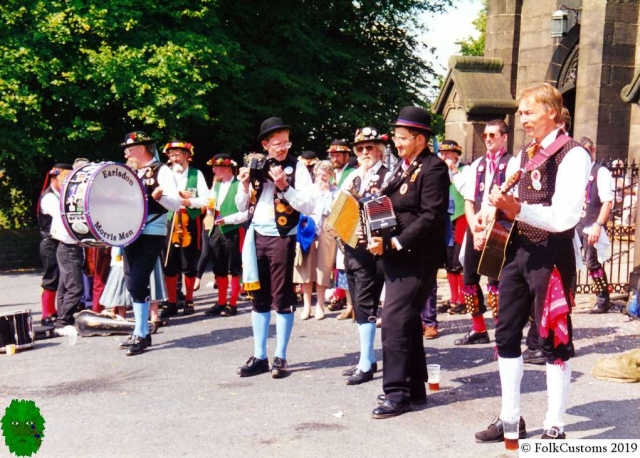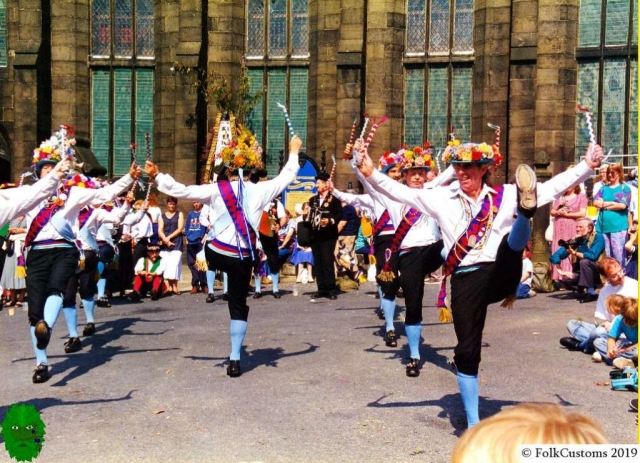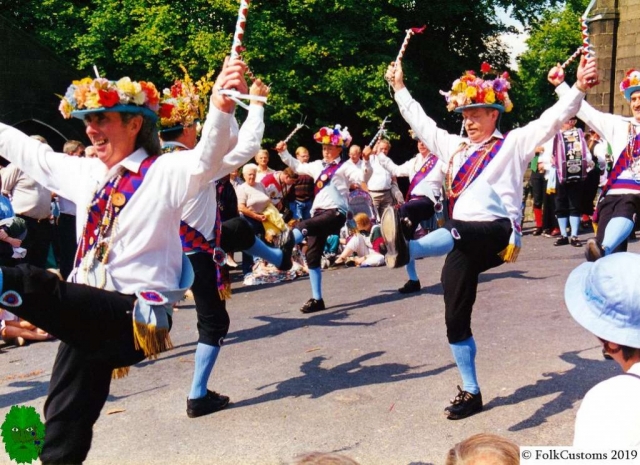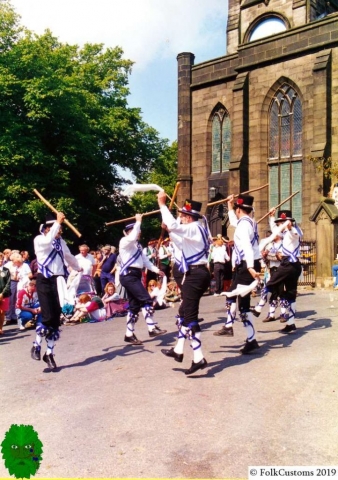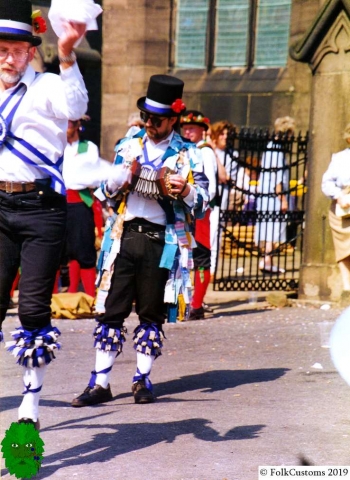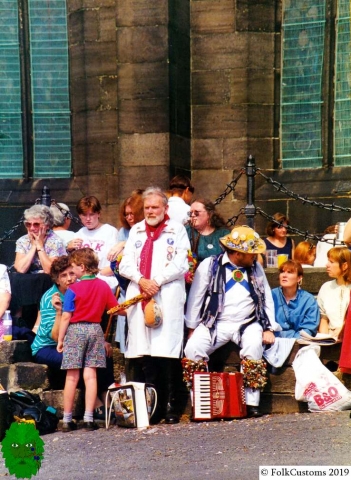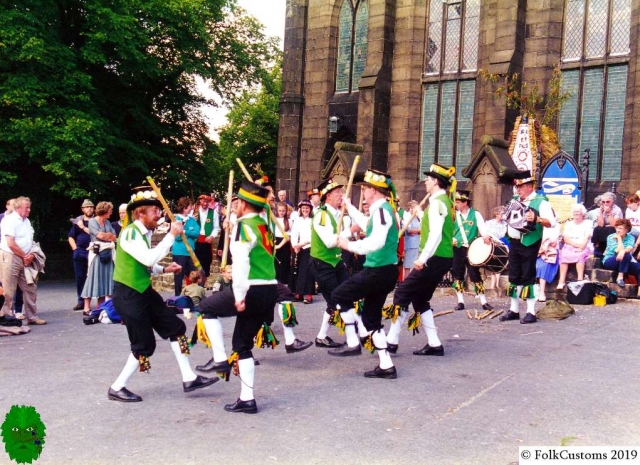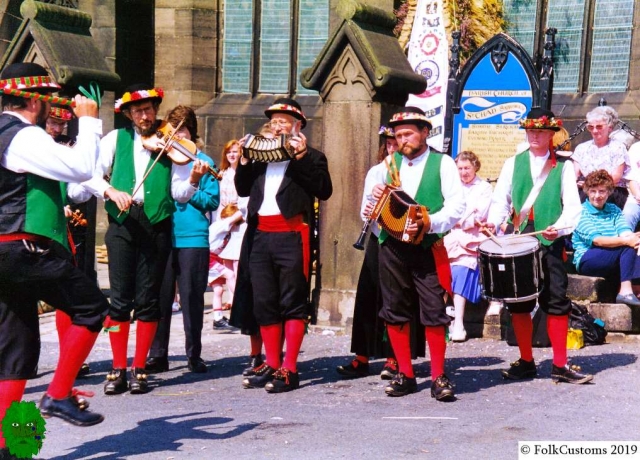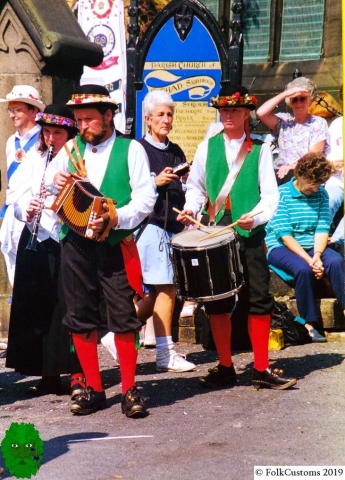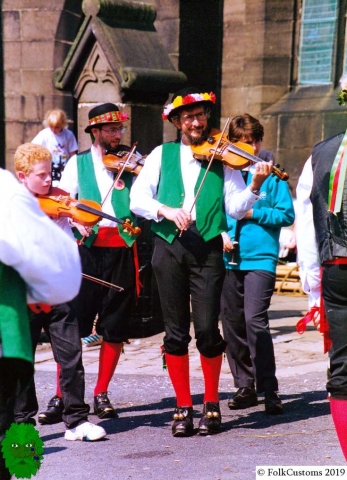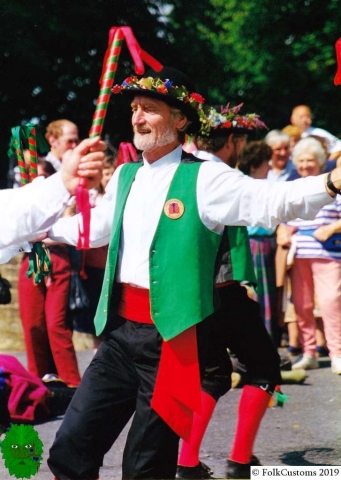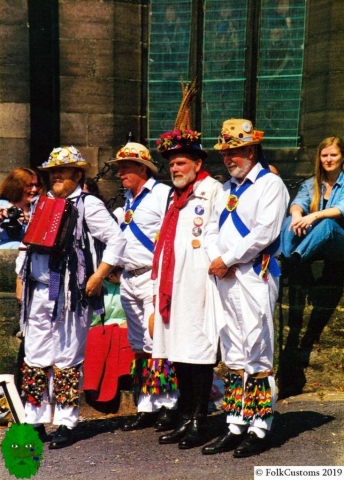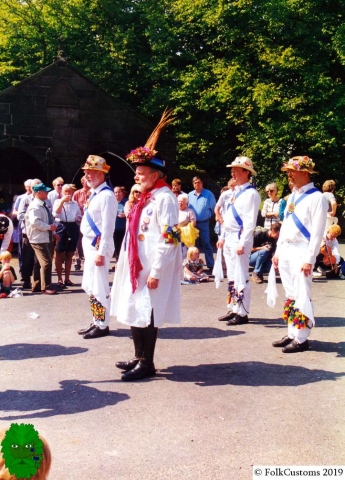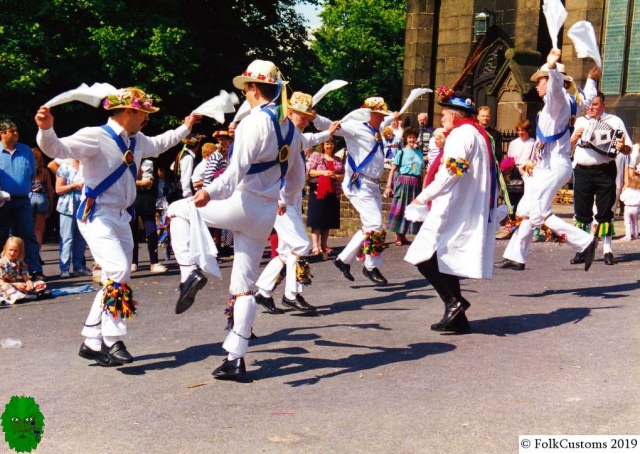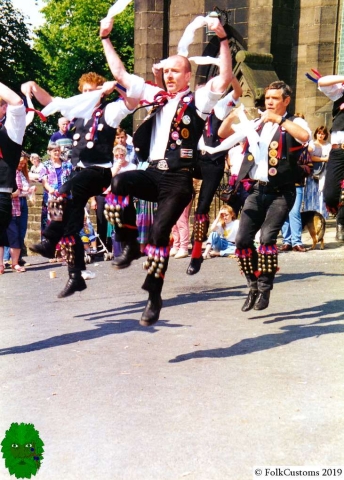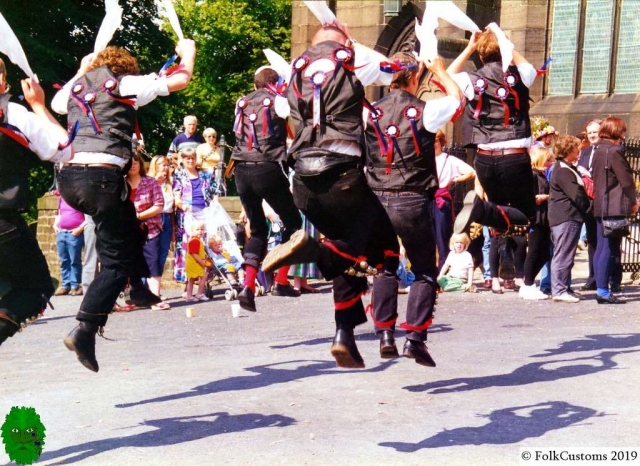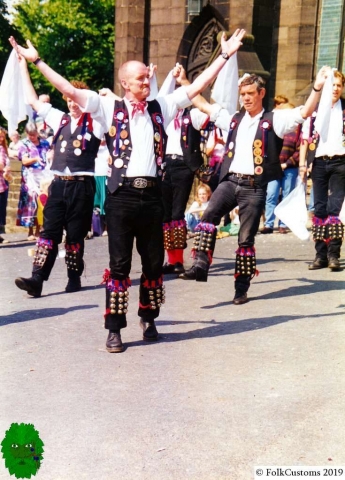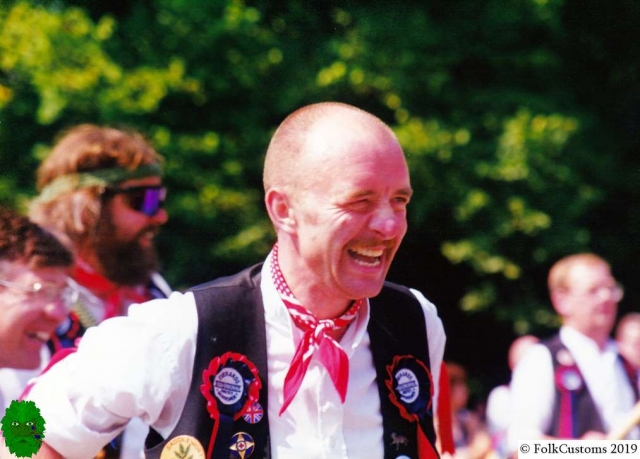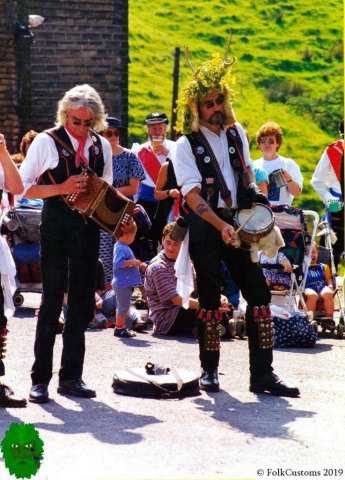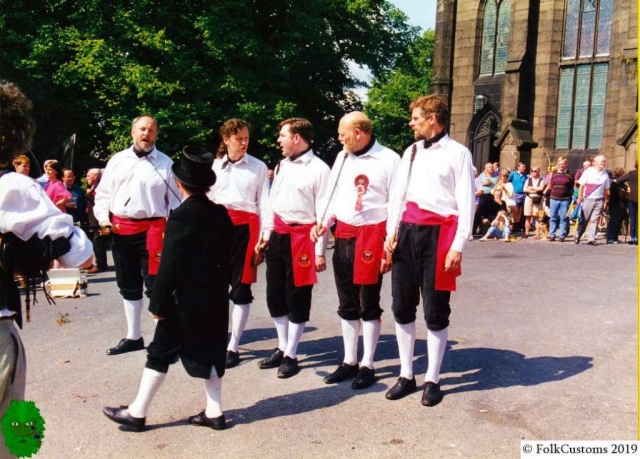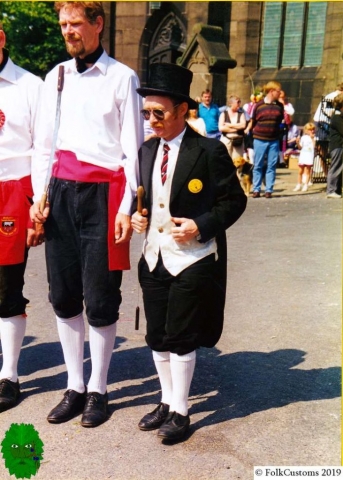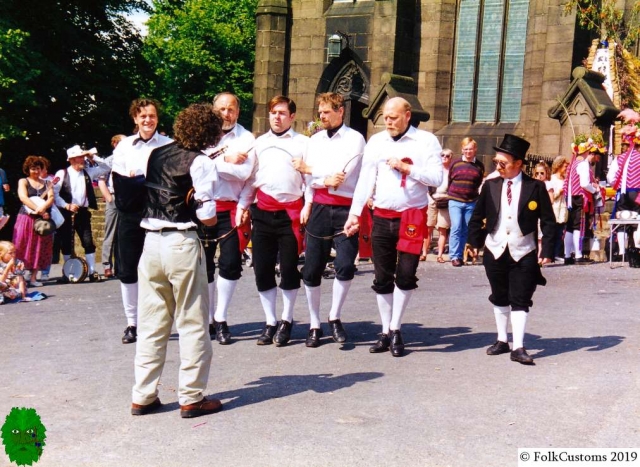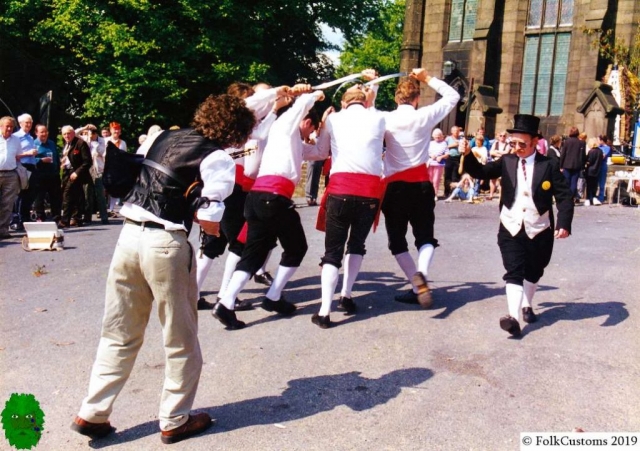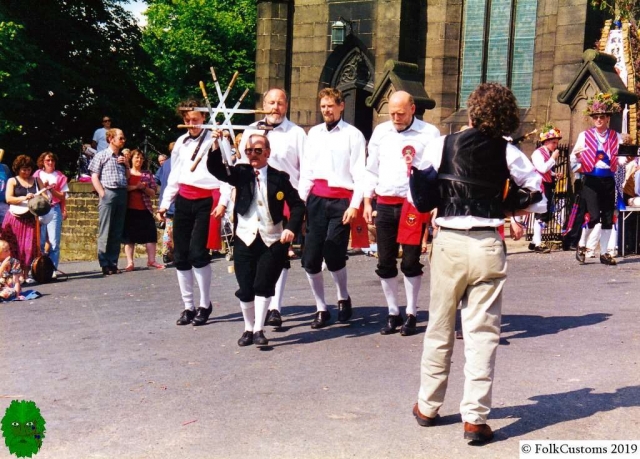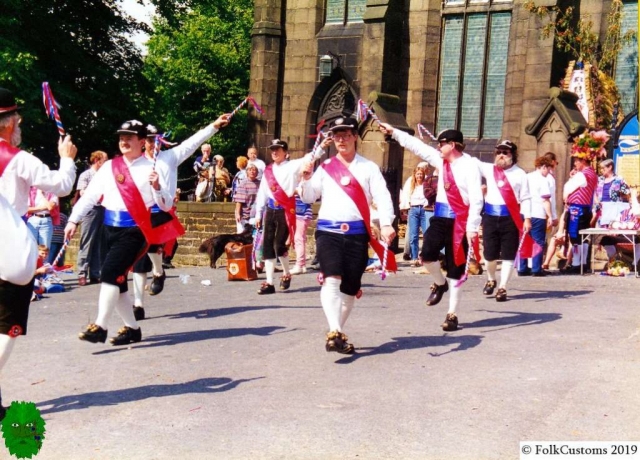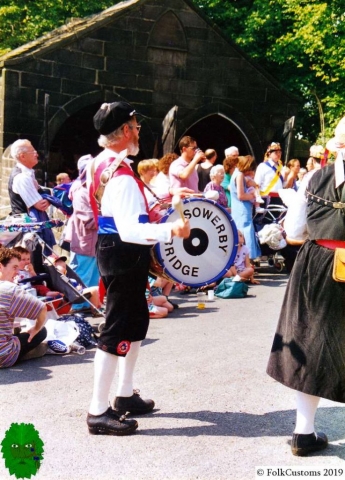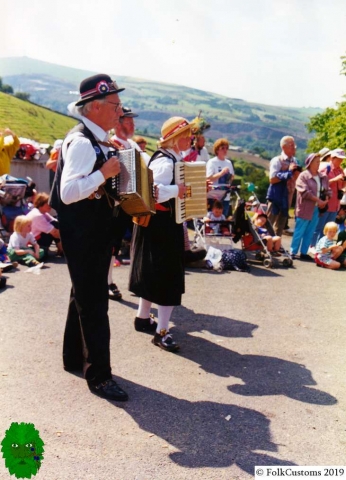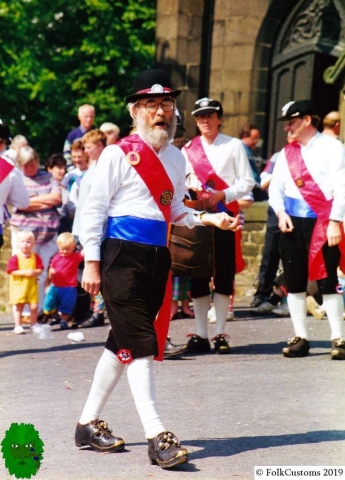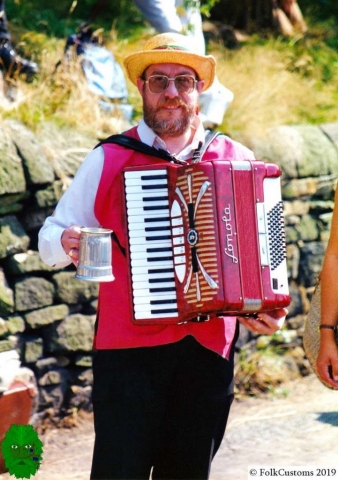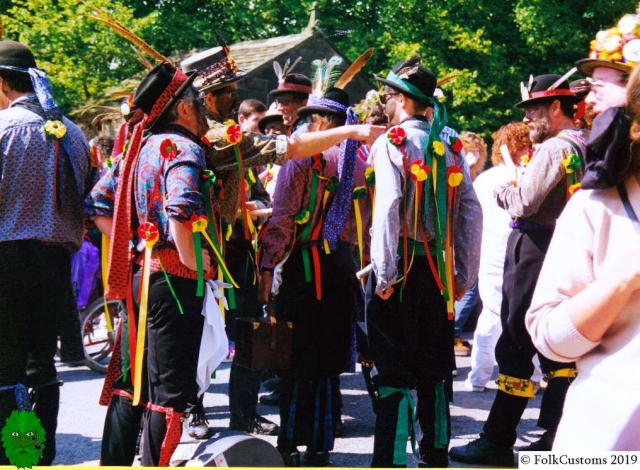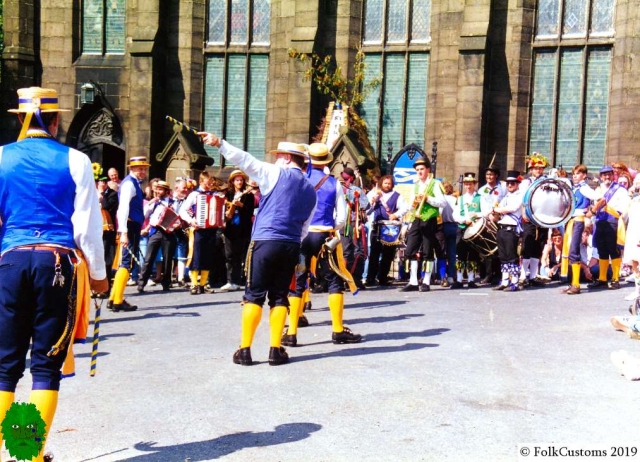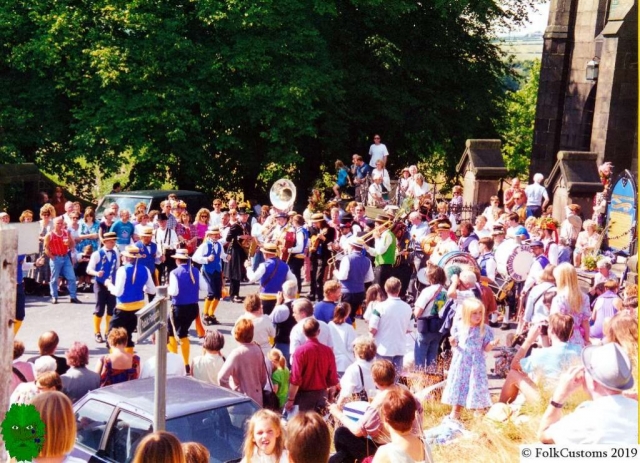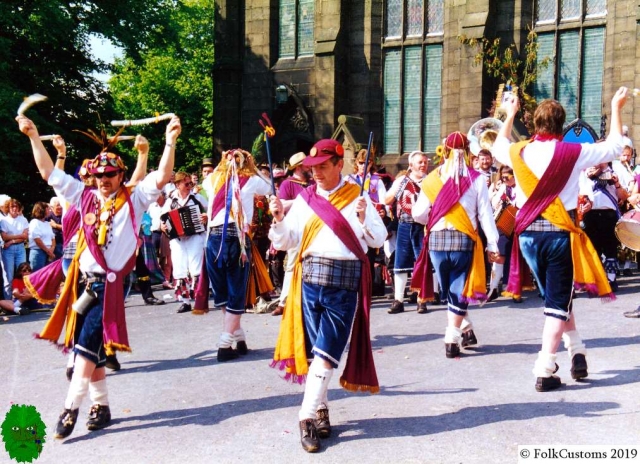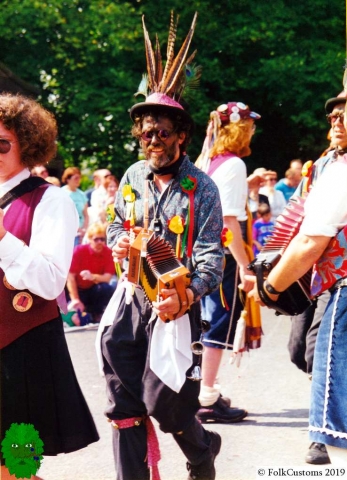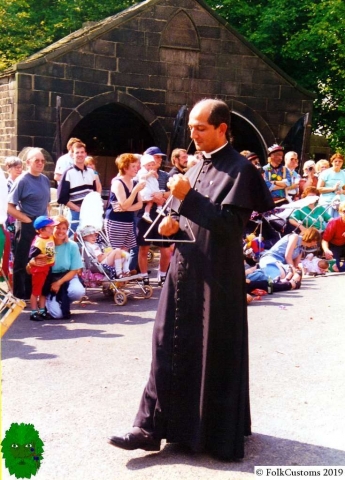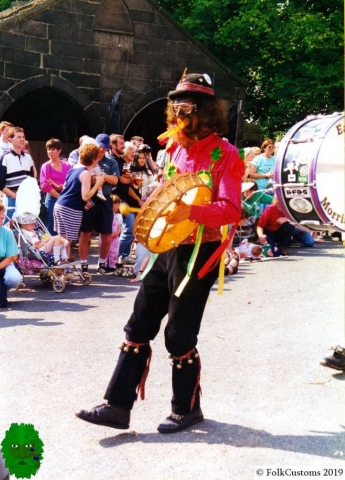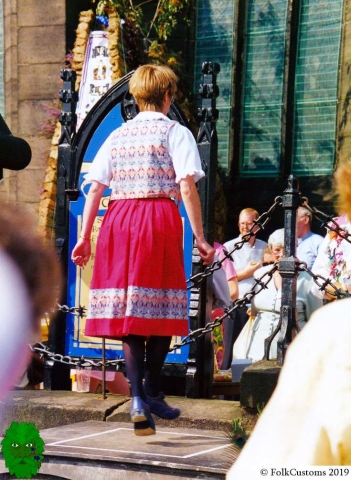Category Archives: Yorkshire
The Giant of Sessay
The Darrel family owned Sessay (a small Yorkshire village around 4 miles from Thirsk) from the end of the 12th century to the days of Henry VII. It was during reign of that king, that the three sons of George Darrel died without fathering heirs, the manor therefore passed to his daughter — a strong-minded young woman, named Joan.
Taking advantage of the lack of a lord to defend the manor an evil giant took up residence in the woods around the village. He was a huge brute in human form — legs like elephants’ legs, arms of a corresponding size, a face most fierce to look upon, with only one eye, placed in the midst of his forehead; and a mouth large as a lion’s, garnished with teeth as long as the prongs of a pitchfork.
His only clothing was rudely fashioned from cow hides; while over his shoulder he carried a stout young tree, torn up by the roots, as a club.
Sowerby Bridge Rushbearing 2014
Saddleworth Rushbearing 2014
Ragnar Lodbrog and Crake Castle.
Ragnar Lodbrok or Lothbrok (Old Norse: Ragnarr Loðbrók, “Ragnar Hairy Breeches“) was a legendary Norse ruler and hero from the Viking Age described in Old Norse poetry and several sagas. In this tradition, Ragnar was the scourge of France and England and the father of many renowned sons, including Ivar the Boneless, Björn Ironside, Halfdan Ragnarsson, Sigurd Snake-in-the-Eye, and Ubba. While these supposed sons appear to be historical figures, it is uncertain whether Ragnar himself existed. Many of the tales about him appear to originate with the deeds of several historical Viking heroes and rulers.

19th century artist’s impression of the execution of Ragnar Lodbrok
So far back as the days of the Saxon and the Dane, there stood, on the well-known prominent hill beyond Easingwold, the Castle of Crake — or Crec, as it was then called. Though situated in the Saxon kingdom of Deira, it belonged, at the time of our story, to Ella, King of Bernicia, the more northern division of Northumbria. It had previously been given to St. Cuthbert, the well-known northern saint, as a resting place on his long journey from Lindisfarne to the south; but Ella, who had little respect either for religion or for right, had seized upon it, and converted it into a fortress in his neighbour’s domains, and its underground dungeons into a prison for those whom he wished to hide from the world.
Stott Hall Farm – A Modern Myth
In the 1970′s, the M62 (built to connect Hull and Liverpool) forged it’s way across the rugged Pennine hills making it the highest motorway in England. Just over the border into Yorkshire lies Stott Hall Farm, instantly recognisable to anyone who has traveled this route and quite a few who haven’t.
The farmhouse (built in 1737) now stands isolated by the two carriageways of this busy motorway, which pass to either side. Modern mythology would have us believe that this was all down to the stubbornness of Ken Wild, the man who lived in the farm at the time.
Whilst hundreds of homes were demolished to make way for this major artery across the country, Stott Hall Farm remained standing. Despite offers of ludicrously large sums of money by bowler-hatted civil servants who reluctantly came up from Whitehall to this desolate location, the farmer refused to budge and the Government was forced instead to change the plans at great expense.
The truth is, that it was the land itself that forced the mile long rent, the waterlogged moorland and steep incline on the hill making it impossible (at the time at least) to construct the two carriageways side by side without the land slipping and destroying the construction.

